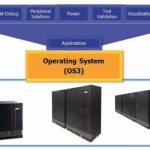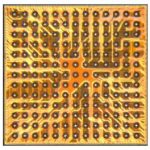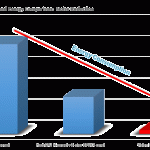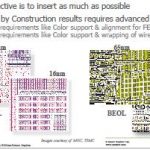When most people talk about the IoT, it is usually all about wearables-this and low-power-that – because everyone is chasing the next huge consumer post-mobile device market. Mobile devices have provided the model. The smartphone is the on-ramp to the IoT for most consumers, with Bluetooth, Wi-Fi, and LTE, and maybe a dozen or … Read More
Electronic Design Automation
Learning about 3D Integration of ICs and Systems
We blog a lot about Moore’s Law, and even “More than Moore” where 3D integration of ICs and systems are used to get lower product costs. One big challenge with 3D integration of ICs is that most EDA software was really intended only for abstracting at 2D or 2.5D structures. Over the past several years there have … Read More
Our Own Cadence Amongst the Best Multinational Workplaces!
There were some very happy faces around MemCon this week for a variety of reasons. Paul McLellan was smiling because he now works full time for Cadence and has the best medical benefits ever and of course I was smiling because there was free food! … Read More
Wafer-Level Chip-Scale Packaging Technology Challenges and Solutions
At the recent TSMC OIP symposium, Bill Acito from Cadence and Chin-her Chien from TSMC provided an insightful presentation on their recent collaboration, to support TSMC’s Integrated FanOut (InFO) packaging solution. The chip and package implementation environments remain quite separate. The issues uncovered in bridging… Read More
A Connectivity Verification Idea
A Wirble
In case you hadn’t noticed, I like to write from time to time about EDA product ideas. I assume these are somewhat original, but given the maxim “there’s nothing new under the sun…”, I may well be wrong. In any event, I like to share these ideas if only to demonstrate that innovation in EDA is not stalled because we’ve run out big,… Read More
SpyGlass World at Levi Stadium, October 21st
I suppose you might have something better to do next Wednesday but, seriously, it had better be pretty good. I admit I’m biased (I was the Atrenta CTO until very recently) but even given that and mixing metaphors, Atrenta really knocked it out of the park when they got the 49er stadium for their User Group meetings. You don’t have to … Read More
Tensilica 4th generation DSP IP is a VPU
You may not know Tensilica DSP IP core, but you probably use Tensilica DSP powered systems in your day to day life. Every year, over 2 billion DSP cores equip IC in thousands of designs supporting IoT, Mobile Phones, Storage/SSD, Networking, Video, Security, Cameras… and more. Why DSP processing, the foundation of all Tensilica… Read More
Meeting DFM Challenges with Hierarchical Fill Data Insertion
To describe the latest methodology for the addition of Design for Manufacturability fill shapes to design layout data, it’s appropriate to borrow a song title from Bob Dylan – The Times They Are A Changin’. The new technical requirements are best summarized as: “The goal is now to add as much fill as possible, which (ideally) looks… Read More
Applying EDA Concepts Outside Chip Design
(I changed the title of this piece as an experiment) Paul McLellan recently wrote on the topic of new ventures crossing the chasm (getting from initial but bounded success to a proven scalable business). That got me to thinking about the EDA market in general. In some ways it has a similar problem, stuck at $5B or so and single-digit… Read More
S2C ships UltraScale empowering SoFPGA
Most of the discussion around Xilinx UltraScale parts in FPGA-based prototyping modules has been on capacity, and that is certainly a key part of the story. Another use case is developing, one that may be even more important than simply packing a bigger design into a single part without partitioning. The real win with this technology… Read More









Quantum Computing Technologies and Challenges